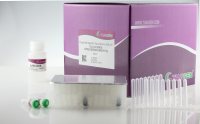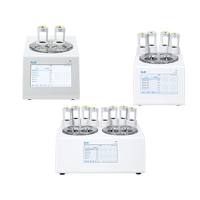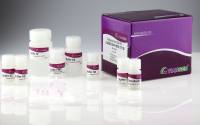C. Elegans 基因组DNA的制备
互联网
Preparation of C. elegans Genomic DNA
Protocol by Andy Fires Lab
Modified my Min-Ho Lee and Sudhir Nayak
This protocol is based on the original Fire lab protocol for isolating genomic DNA from C. elegans. It has been modified to allow for large scale preparation of genomic DNA from C. elegans (or related nematodes). If you want a small scale prep, take a look at the original protocol or scale this one down.
Solutions
1) Worm lysis buffer; 0.1M Tris-Cl pH 8.5, 0.1M NaCl, 50 mM EDTA pH 8.0, 1% SDS. Store at RT. There could be some precipitation after long term storage. If there is any precipitate then put it at 37℃ before use.
2) CTAB/NaCl solution; 10 % CTAB in 0.7M NaCl
Dissolve 4.1 g NaCl in 80 ml distilled water and slowly add 10 g CTAB (Sigma M-7635) while heating and stirring. If necessary, heat to 65C to dissolve. Adjust final volume to 100 ml.
3) Protease K; 20 mg/ml in TE pH 8.0. Store at -20℃ in single use aliquots. DO NOT FREEZE-THAW.
Worm preparation
1) Seed 4 x 10 cm plates with 15 young adult hermaphrodites and grow 1 week to have a lot of starved L1.
2) Harvest starved L1 from plates and do 200 ml size liquid culture for 3-4 days at 20℃ until the majority of worms reach the adult stage.
3) Harvest and do 30% sucrose float twice to remove E. coli and other contaminants.
4) Aliquot worms in 500ul volumes in 1.5 ml Epp. tubes and freeze at -80℃.
NOTE: You can also grow worms on instead of using liquid culture.
DNA preparation
1) Add 4.5 ml of worm lysis buffer to a frozen 500 μl aliquot of worms. (transfer to 15 ml Falcon tube)
2) Add 200 μl of 20 mg/ml Protease K to worms and vortex.
3) Incubate at 62℃ for 60 minutes. Vortex 4-5 times during the incubation. The solution should clear as the worms disintegrate.
4) Add 800 μl of 5M NaCl. Mix thoroughly by inversion (important)
5) Add 800 μl CTAB solution. Incubate 10 minutes at 37℃.
6) Add 7 ml chloroform, mix and spin. Recover aqueous phase.
7) Add 7 ml phenol/chloroform/isoamyl alcohol (saturated with TE pH 8.0), mix and spin. Recover aqueous phase.
8) Add 0.6 volume of -20℃ isopropanol. Invert to mix. The stringy white DNA should be obvious. Spin at 4℃ for 5 minutes.
9) Wash twice with 70 % EtOH
10) Dry and resuspend DNA in 340 μl TE.
11) Add 10 μl of RNase A (10 mg/ml heat-treated to kill DNase) and incubate 2 hours at 42℃.
12) Add 20 μl of 20 % SDS, 10 μl of 0.5 M EDTA pH 8.0, 20 μl of Protease K and incubate 65℃ for 2 hours.
13) Add 40 μl of 10M Ammonium Acetate.
14) Extract twice with phsnol/chloroform/isoamyl alcohol (saturated with TE pH 8.0), once with chloroform. Add 1 ml of EtOH, mix and spin at 4℃ for 10 minutes.
15) Wash twice with 70% EtOH.
10) Dry and resuspend DNA in 200 - 500 μl TE. (usually get 2 to 5 mg/ml genomic DNA. Should run agarose gel to make sure the size is big)









